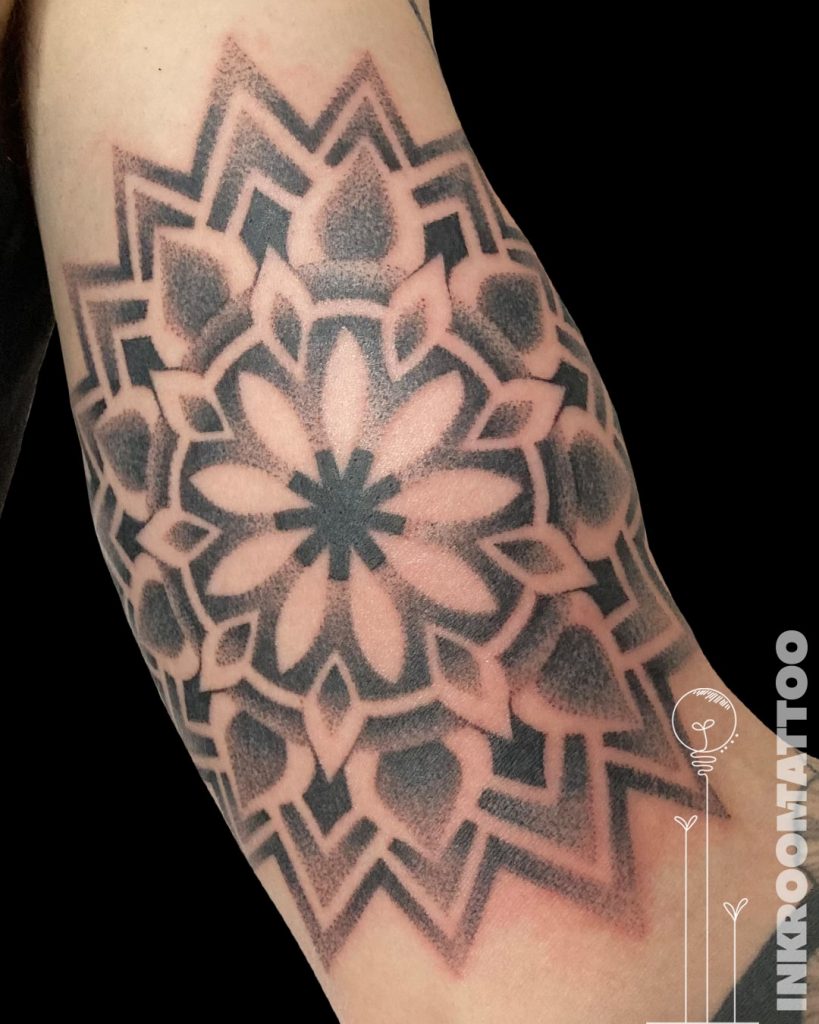The History and Meaning of the Mandala
The word mandala (Sanskrit: मण्डल, Latin: maṇḍala, meaning “circle”) comes from the classical Indian language Sanskrit. It refers to a circle, arc, segment, or disc, and is also connected to the mind, as manas means “mind.”
In various spiritual traditions, mandalas are used by practitioners and adepts to focus attention, serve as spiritual guidance tools, establish sacred space, and assist in meditation and trance induction.
They are not just geometric shapes – in Buddhist and Hindu cultures, mandalas carry deep symbolic meaning. They are believed to represent different aspects of the universe. A mandala typically symbolizes a spiritual journey that begins from the outer edge and moves inward toward the center. As one travels through the layers, the mandala guides the believer through the transformation of the universe, showing the path from suffering to joy.
In Hinduism, the basic mandala, also known as a yantra, is square-shaped with four gates enclosing a circle and a central point. A yantra is similar to a mandala but generally smaller and with a more limited color palette. It is said to represent the dwelling place of a deity. Each yantra is unique and, through its detailed symbolic geometry, invites the presence of the divine.
In Buddhism, mandalas were further developed into sand paintings, visually representing the essence of Vajrayana teachings. The mind is considered a microcosm, reflecting various divine forces of the universe. The mandala symbolizes the Pure Land, the Enlightened Mind, and serves as a reminder of death and the impermanence that saturates samsara (the cycle of rebirth).
As a meditation on impermanence—a central teaching in Buddhism—sand mandalas are swept into a pile after days or weeks of careful creation and are then poured into flowing water to spread the mandala’s blessings. Death is not the end; our essence returns to the elements. This reflects the belief in non-attachment to anything.
Three Main Types of Mandalas:
- Teaching Mandala: Created by students following specific design principles; it represents their understanding and knowledge.
- Healing Mandala: Designed for meditation to support wisdom, emotional balance, and concentration.
- Sand Mandala: Made from colored sand, these represent the impermanence of life.
Common Mandala Symbols:
- Eight-spoked wheel: Its circular shape represents the artistic view of the universe, while the eight spokes symbolize the Eightfold Path in Buddhism that leads to liberation and rebirth.
- Bell: Represents the opening and clearing of the mind, allowing wisdom to enter.
- Triangle: Pointing upward, it symbolizes action and energy; pointing downward, it expresses creativity and the pursuit of knowledge.
- Lotus flower: A sacred symbol in Buddhism, its symmetry represents balance.
- Sun: Represents the universe and often carries meanings related to life and energy.

Mandala Tattoos:
Thanks to their beautiful shapes and symbolic depth, mandalas have become increasingly popular in tattoo culture. The visual appeal of these patterns is thought to have a calming and healing effect on the soul. Every mandala is unique – even if the design is the same, its meaning can differ from person to person. That’s why it’s important to choose a pattern that resonates with you.
Mandala tattoos are growing in popularity due to their versatility in form, color, and design – making them a great fit for a wide range of personal styles. They can stand alone as full pieces or be used as decorative elements, but it’s important to place them carefully on the body to avoid distortion. Ideal placements are naturally round areas like the elbow, knee, shoulder, or areas where the entire mandala can be viewed from a single angle.
Mandala tattoos carry positive energy and symbolize inner peace and the path to personal growth.
Color Meanings in Mandala Tattoos:
- White: Calmness, relief, compassion
- Black: Insight, rebirth, mystery
- Grey: Love, gentleness, loyalty, emotional healing
- Yellow: Nature, intelligence, friendliness, receptiveness
- Blue: Harmony, relaxation, satisfaction
- Fiery Red: Change, power, love, fearlessness
- Purple: Wisdom, humanity, idealism
- Pink: Sensitivity, inner healing, universal healing
- Violet: Moderation, wisdom, intelligence, patience
- Orange: Ambition, vitality, intuition, self-control
- Green: Healing, trust, tranquility, growth, connection
- Brown: Conscious connection to nature, stability
- Silver: Overflowing emotions, abundance, supernatural abilities


